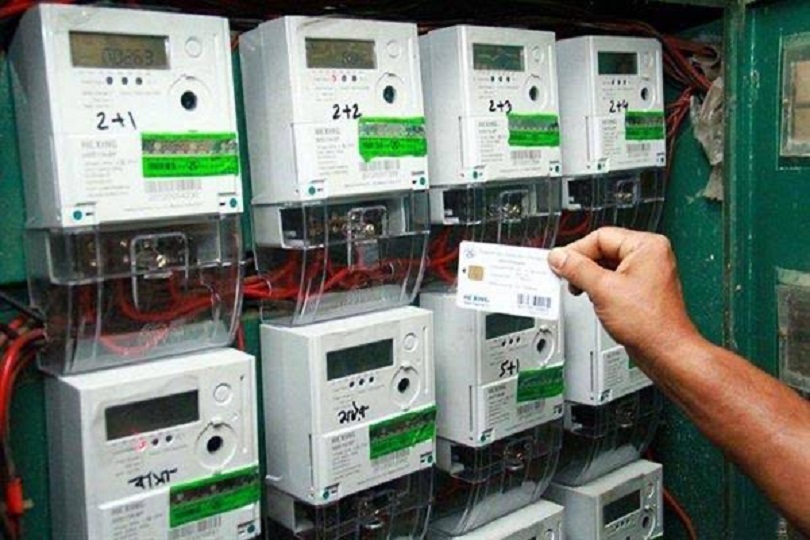
By Peer Mohammad Amir Qureshi
The Union Territory of Jammu and Kashmir has enormous potential for producing hydel power despite not being well known for its energy resources like coal, gas, or petroleum. The UT of Jammu and Kashmir is widely known for its numerous turbulent streams that burst down precipitous mountains. Both the topography and the flow are ideal for the state’s hydroelectric power production. The UT’s projected hydel power generation capacity is 2000 MW, but some more recent studies dispute this number by putting the capacity at 3500 MW. Only 10% of this enormous potential has been harnessed thus far, leaving the remaining 90% unrealized. A significant portion of the overall tapped potential goes into the kitty of National HydroElectric Power Corporation ( NHPC), leaving just a little portion or peanuts to the other state.Delving into NHPC’s power projects, the Salal hydroelectric power project, nestled along the Chenab stream in the Reasi region of Jammu division, stands prominently. Boasting an installed capacity of 690 MWs, this endeavor commenced in 1970, achieving a milestone with its inaugural phase in 1987. The subsequent stages unfolded in 1993, 1994, and 1995, consecutively. Operational under NHPC since its inception, the project significantly contributes to the northern power grid, showcasing the transformative potential of sustainable energy initiatives.
Dulhasti Hydroelectric Power Project, spanning the Chenab in Kishtwar district, melds the distinct locales of Dul and Hasti, each housing a dam and powerhouse. Commencing construction in 1985, this marvel culminated in 2007 with a total installed capacity of 390 MW. Operated by NHPC, its power surges into the northern grid.
Uri Hydroelectric Power Project, nestled along the Jhelum near Uri in Kashmir division, boasts a phase I capacity of 480 MW. A powerhouse in the energy landscape, it channels a substantial share into the Northern Grid under NHPC’s watchful operation.
The grandeur of the Baglihar Power Project unfolds along the Chenab near Batote. Sporting a colossal 900 MW installed capacity, its first phase initiated in 1999, achieved operational brilliance in 2008, and fully concluded in November 2015. Despite public and PDC opposition, this state-owned venture succumbed to NHPC after an impressive three-month stint.
Transitioning to JKPDD’s domain, the Mohra Hydroelectric Power Project, born in 1907, stands as a testament to history, nestled on the Jhelum River in Baramulla. With a vintage 9 MW capacity, it holds the honor of being the second hydroelectric power project on the Indian subcontinent.
The Lower Sindh Hydroelectric Power Project, established in 1956, harnesses Nallah Sindh’s flow in Ganderbal, with a 15 MW capacity. The Lower Jhelum Hydroelectric Power Project in Warikhwal taps into the Jhelum River’s energy, contributing to the region’s power needs.
Sumbal and Kangan unveil their prowess through Upper Sindh Hydroelectric Power Project (22.60 MWs) and Upper Sindh Hydroelectric Power Project (105 MWs), respectively, showcasing the diverse hydroelectric landscape of the region.The collective output from 24 hydroelectric projects exceeds 3500 MW annually in Jammu and Kashmir. Although Kashmir generates around 2500 MW, the umbilical connection to NHPC’s northern network necessitates power purchases, an ironic predicament for the UT.
In a disconcerting twist, the government has unveiled a stark schedule of power outages, casting a shadow with a daily 4-5 hour blackout in metered regions and an extended eight-hour outage in non-metered areas. Winter’s icy embrace, already formidable, becomes an arduous battle when compounded by sub-zero temperatures during these power interruptions. As if the chill weren’t biting enough, consumers find themselves grappling with soaring electricity bills, a bitter aftermath of the Joint Electricity Regulatory Commission (JERC) of Jammu and Kashmir’s sanctioning of an 8 to 22% surge in residential, commercial, industrial, and agricultural power tariffs across the Union Territory. This fiscal shockwave has stirred unrest among the people of J&K in the districts of Ganderbal and Doda, the District Administration in the year 2022 has wielded its authority, imposing constraints on the sale of electric appliances. Store owners, under governmental urging, are compelled to withhold the sale of crucial heating equipment from desperate clients. Section 144 further tightens the grip, enforcing restrictions on the purchase of heaters, geysers, electric blankets, and other indispensable electric appliances. Imagine braving the bitter winter without essentials like heaters and warm water for bathing in the minus temperature abyss. It’s a daunting scenario, emphasizing the critical importance of timely payment of electricity bills by consumers. Yet, the onus lies squarely on the government to fulfill its duty of providing an uninterrupted supply of electricity. The Kashmir Valley, which has the potential to generate about 3500 megawatts of hydel power now finds itself shrouded in complete darkness during the unforgiving winter, underscoring the urgency for a luminous resolution.
Views expressed in the article are the author’s own and do not necessarily represent the editorial stance of Kashmir Observer
- The author is a Ganderbal based writer and columnist. He tweets @peermohdamir and can be mailed at Ehsaanamy133@gmail.com
Follow this link to join our WhatsApp group: Join Now
Be Part of Quality Journalism |
Quality journalism takes a lot of time, money and hard work to produce and despite all the hardships we still do it. Our reporters and editors are working overtime in Kashmir and beyond to cover what you care about, break big stories, and expose injustices that can change lives. Today more people are reading Kashmir Observer than ever, but only a handful are paying while advertising revenues are falling fast. |
| ACT NOW |
| MONTHLY | Rs 100 | |
| YEARLY | Rs 1000 | |
| LIFETIME | Rs 10000 | |










